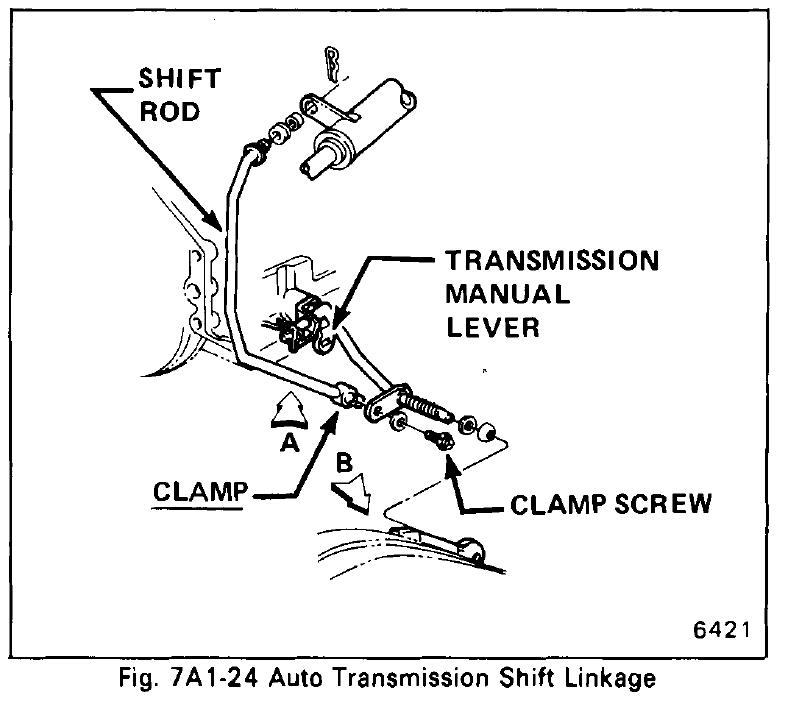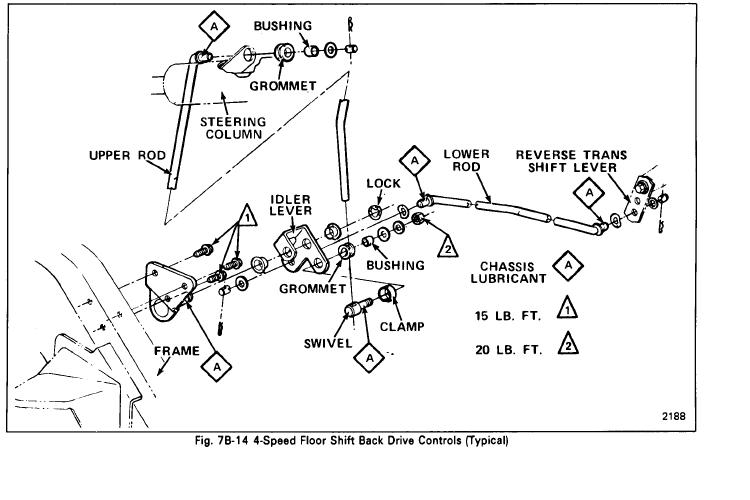This is recreated from a sticky thread we had.
Here's something that has always puzzled me. On my '79 Trans Am there is a collar around the steering column that moves in conjunction with the console-mounted (automatic) transmission shifter. If the car is in neutral, I can actually rotate this collar with my hands, which will move the console shifter and drop the car into gear. I'm thinking this is dates back to when a column shifter was actually an option, but why in late model Firebirds and Trans Ams in particular was the collar still connected to the shifter after the column shift option went away? Anybody know the history on this design?
Its called a backdrive mechanism....It controls the steering wheel lock, the neutral start switch, and the backup lights, all of which are mounted in or on the steering column. the idea is that:
you cannot switch the key to the off position and remove it from the ignition (thereby locking the steering) unless the car is in PARK. You cannot lock the steering wheel unless the car is in Park (and therefore not in motion). Once the steering wheel is locked, the transmission is locked in park. This was an anti-theft feature mandated by the US government in 1969.
For a manual car, the gearbox has to be in reverse to lock the steering wheel and pull out the key.
These parts can get lost, and they can interfere with headers, so sometimes we get questions here about how to live with this system 50 years later.
If you look under there, you'll see linkage rods going from the transmission to a shift arm on the bottom of the steering column. The linkage looks like the photo below. When you shift the floor shift, the linkage moves the arm which moves the collar on the column. This movement inside the column makes it so you can only turn the key and start the car in park and neutral, and also operates the back-up light switch that's attached to your column under the dash. And you can only turn the key to the lock position and remove the key when the shifter is in park.

Here is a diagram pictures of the automatic version. It's generic, so don't get too hung up on the shape of the cross-shaft! also, on f-body, the end of the shaft fits into a cup on the frame. On the late 70's cars, the spring is necessary to hold that cup in place. Up through 1974, the cup wouldn't just fall out, but starting in 1975, they saved 5 cents on a bolt and it'll just fall out and be lost.

The adjustment procedure is to loosen the adjustment bolt, put everything in park:
-transmission in park
-shifter in park
-Column in park (it'll stay there if you take the key out)
and then tighten it back up.
check to make sure it starts in park and neutral, and the backup lights come on in reverse.
This is the same procedure for adjusting the floor shift cable. There is a bit of slop in the linkage. if the column doesn't operate exactly as you want it to, you may need to fudge the slop in it one way or another. Also, the backup light and neutral start switch is able to be adjusted relative to the column, so you can adjust it independently from the key-lock feature.
1979-81 cars are different; the steering column has some sort of mechanical block that prevents the key from turning to "start". Earlier columns had only an electrical switch.
Here's the manual 4-speed version:

This allows you to lock your steering wheel only while in reverse. I guess they thought that was the least dangerous option.
The "neutral start" provision was moved to the clutch switch, so the backdrive linkage has no effect on starting a car with a manual transmission.